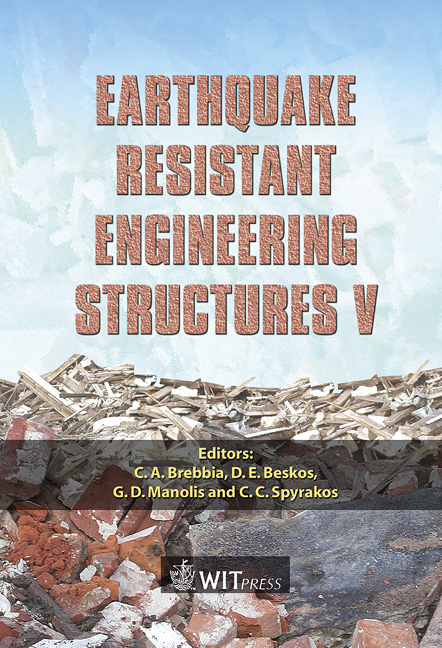Seismic Response Of A Single Story Innovative Steel Frame System
Price
Free (open access)
Transaction
Volume
81
Pages
9
Published
2005
Size
571 kb
Paper DOI
10.2495/ERES050251
Copyright
WIT Press
Author(s)
M. Dicleli & A. Mehta
Abstract
The presented research studies the seismic response of a new braced steel frame type and a new design philosophy that will focus on minimizing damage to the essential structural members and ensuring satisfactory post-earthquake performance of steel buildings under service loads with minimal rehabilitation costs. The proposed frame type is composed of beams and columns with rigid connections, chevron braces and a conventional energy-dissipating member called the shear element connected between the braces and the beam. Nonlinear static pushover and seismic analyses are conducted to assess the performance of the proposed efficient energy dissipating steel frame (EEDBF) compared to the conventional concentrically braced frames (CBFs) and moment resisting frames (MRFs). The results have revealed that the EEDBF has a more stable force-lateral deformation hysteresis loop compared to CBF. The energy dissipation is comparable with MRF. The story drift of the EEDBF at medium to large intensity ground motions is smaller than that of both the CBF and MRF. Keywords: steel, frame, brace, buckling, shear, nonlinear, seismic, performance. 1 Introduction MRFs, and CBFs are commonly used in the construction of steel buildings. MRFs provide open vertical space to architects and have large ductility capacity as compared to other frame types. But the ductility demand on these frames is highly sensitive to the gravity loads acting on their members Park et al. [1]. Moreover, MRFs require larger member sizes as compared to other frames Bruneau et al. [2]. In MRFs, as the inelastic bending deformation of the beams results in dissipation of earthquake input energy Della Corte et al. [3],
Keywords
steel, frame, brace, buckling, shear, nonlinear, seismic, performance.





